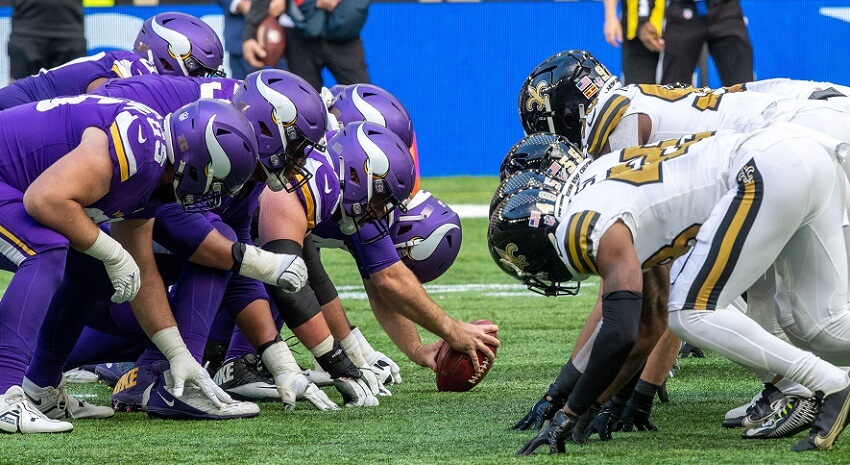NFL’s Minnesota Vikings Draft LogicMonitor for Reliable Video Access
Pro football team turns to cloud-based IT monitor to ensure 125 TB of video is available to coaches and players for gameday prep.

In need of an edge to battle their way into the NFL playoffs, the Minnesota Vikings must win big this Sunday and get a lot of help in the current standings. Backing up the team on the field is an IT staff, who may not suit up in pads and cleats, but is increasingly essential to decisions made from the sidelines.
Footage and data gathered from sports is increasingly part of providing teams, as well as fans, extra perspectives on athletes’ performance on the field. Digital insights about sports are often part of coaches and athletes discovering ways they might elevate their competitive skills. That means sports teams such as the Minnesota Vikings have ever-escalating data and compute needs that include ensuring the information they require is consistently available.
Matt Freshwater, information technology manager for the Minnesota Vikings football team, shared with InformationWeek some of his organization’s needs for monitoring resources. The IT team within the organization adopted LogicMonitor, he says, to ensure the team’s game and practice video footage is always available to help give them a competitive advantage.
Running and Rushing
The types of issues he says LogicMonitor assists with include proactively catching if video lags or will not load, which may stem from a process running on the server causing SQL to be slow or a lack of memory resources.
“I just get a better insight of what my server is doing,” Freshwater says. This can include discovering when SQL jobs were running at various times of the night, causing CPU spikes. “I had no idea what was going on until I get a graphical view of what’s going on on that server that hosts all of our video.”
Before using LogicMonitor, he says the team dealt with constraints of limited server storage, as well as issues that surfaced in video replay and application stability. “For a long time, our IT department was kind of reactive and it got to the point where something had to change,” Freshwater says, “so that we got ahead of our problems instead of always behind.”
The Value of Monitoring
They tested out a number of monitoring solutions, he says, to give the IT team a proactive look into its infrastructure and see what was going on. “When you have systems as critical as our video system or our server infrastructure backup infrastructure -- things that keep our business going or that our business relies on -- you really got to be ahead of the curve,” Freshwater says. When other solutions did not really fit the bill, he says the organization came across LogicMonitor. “Some of the biggest components that we find useful from LogicMonitor is the predictive failure,” Freshwater says, referring to analysis that can reveal when a system is likely to run into issues, giving IT teams the chance to respond in advance.
For example, he says the monitor platform could indicate that a storage array would become full within a certain number of days. “We can get customized alerts,” Freshwater says. “It’s all cloud-based.”
He says his team created customized dashboards through the platform, including for storage that makes up the Vikings’ video infrastructure, the network switches that play a part, and servers that run the infrastructure. “We can see at a quick glance if anything is wrong,” Freshwater says.
Mountains of Video
Vikings coaches and football staff need ready access to such video footage, he says, as part of their gameday preparation. “They rely on that system and that infrastructure heavily,” Freshwater says, “so from an IT perspective, we need to make sure that it is up and available. They’re not running into any glitches and that system is up and secure.” Using and manipulating data is part of their workflow and process. “It just needs to be available all the time.”
The Minnesota Vikings have some 125 terabytes of film and video data, he says, in addition to other mountains of data. “Organizationally, I think I managed probably close to a petabyte,” Freshwater says, which includes numerous different arrays in addition to video.
Using LogicMonitor is still relatively new for IT team at the Vikings and Freshwater says he is exploring its potential uses, which may come into play as the football application platform continues to evolve in unexpected ways. “Maybe they go to more of a hybrid or a cloud-based platform from a backend infrastructure standpoint,” Freshwater says. “I don't know how much of that changes, especially because it’s so much data.”
About the Author(s)
You May Also Like







